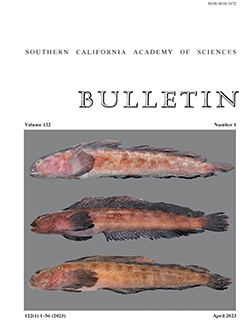Along the Palos Verdes Peninsula in southern California, high densities of Strongylocentrotus purpuratus (purple sea urchin) have consumed almost all macroalgae on large expanses (61 ha) of rocky reef habitat, creating “urchin barrens.” Mesocentrotus franciscanus (red sea urchin) harvesting comprises an important fishery in the region, as their gonads are sold as a high-value sushi product called “uni.” However, with a lack of macroalgal food resources, urchins in barrens are smaller and exist in a starved state, meaning little, if any, gonad product is available to the fishery. To restore local kelp forests and increase gonad biomass available to the M. franciscanus fishery, beginning in October 2013, S. purpuratus were culled in barrens to a target density of 2 per m2 across 5.2 ha of rocky reef on the Palos Verdes Peninsula. Mesocentrotus franciscanus were collected from urchin barren, restoration, and kelp reference sites from April to November 2014 to compare differences in gonad production among the three site types. Culling S. purpuratus resulted in the recovery of normal seasonal M. franciscanus gonad production throughout the 8-month study. Mesocentrotus franciscanus gonad weights at a given test diameter length in restoration sites were equivalent to, and sometimes exceeded, the gonad production of those from the kelp reference sites. The urchin test length distributions of collected M. franciscanus were consistently smaller at urchin barren sites than at kelp reference sites, while those in restoration sites generally fell in between.
How to translate text using browser tools
9 March 2023
Urchin Gonad Response to Kelp Forest Restoration on the Palos Verdes Peninsula, California
Benjamin C. Grime,
Rilee Sanders,
Tom Ford,
Heather Burdick,
Jeremy T. Claisse
ACCESS THE FULL ARTICLE





